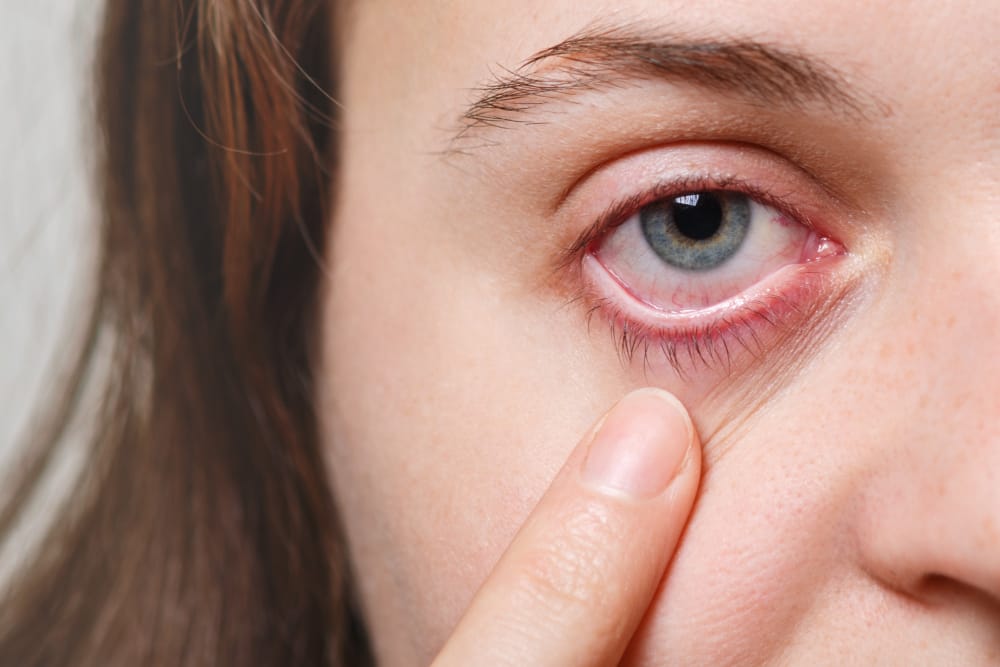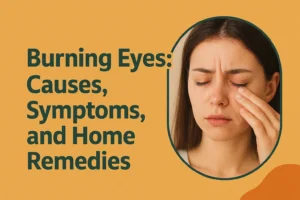Black fungus, also called mucormycosis is a rare but dangerous fungal infection caused by molds called mucormycetes. These molds are found in the environment, especially in soil, plants, decaying fruits and vegetables, and even compost. While this infection can occur in different parts of the body, it is particularly worrying when it affects the eyes. Black fungus in the eyes can cause serious complications, including vision loss and damage to nearby tissues. Understanding black fungus in eyes symptoms is essential for early detection and effective treatment. This article provides a detailed explanation of the symptoms of black fungus in the eyes, how to prevent it and what steps to take if symptoms appear.
What is Black Fungus?
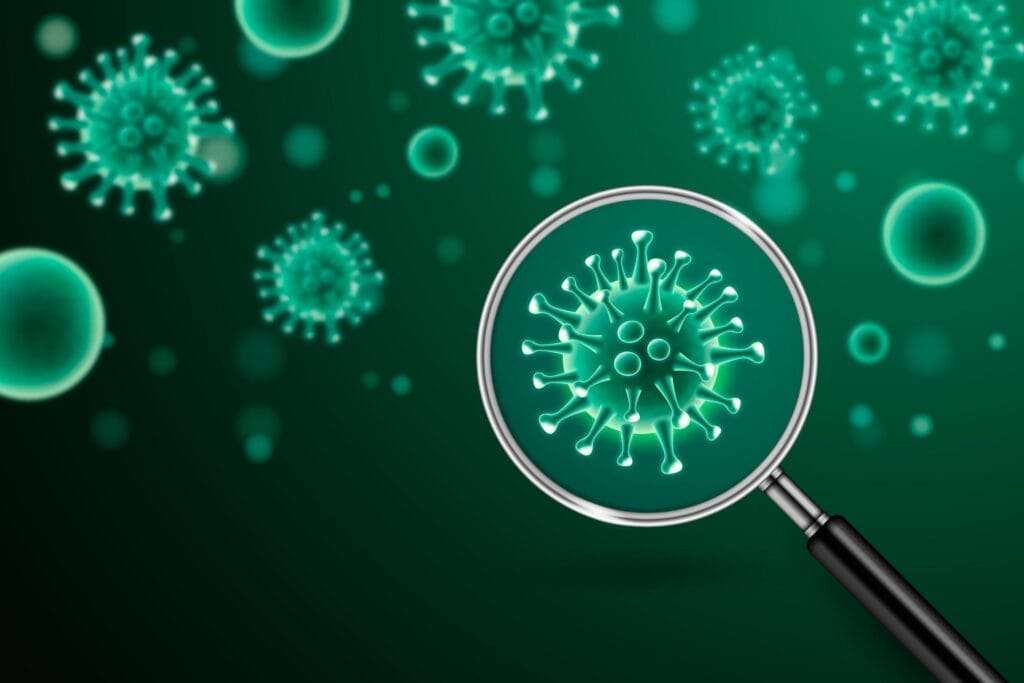
Black fungus is a fungal infection that usually affects people with weakened immune systems. This includes individuals with certain medical conditions or those recovering from illnesses that compromise their body’s ability to fight infections. The spores of the fungus enter the body through the air we breathe, through wounds or via contaminated surfaces. Once inside, the infection spreads rapidly especially if left untreated.
Black fungus gained significant attention during the COVID-19 pandemic, as many patients with severe COVID-19 infections, especially those with diabetes were reported to develop mucormycosis. The extensive use of steroids to treat COVID-19 symptoms enhanced vulnerability to this infection. Black fungus in eyes symptoms often emerged in such cases signaling the seriousness of the condition.
How Does Black Fungus Affect the Eyes?
When black fungus affects the eyes, it is part of a larger condition called rhino-orbital mucormycosis. The infection typically starts in the sinuses where the fungal spores settle after being inhaled. From the sinuses, the fungus can quickly spread to the eyes, brain and nearby tissues. Recognizing these symptoms early is crucial to prevent irreversible damage including loss of vision or even death.
Black Fungus in Eyes Symptoms
Recognizing the symptoms early is crucial. The faster it is diagnosed and treated the better the chances of recovery. Below is a detailed list of the symptoms associated with black fungus in the eyes:
1. Redness and Swelling
Black fungus in eyes symptoms often begin with redness and swelling around the eyes. The eyelids and surrounding areas may appear puffy and tender. If the infection worsens the redness can intensify. Symptoms like these are sometimes mistaken for minor problems and cause delay in treatment.
2. Pain and Pressure Around the Eyes
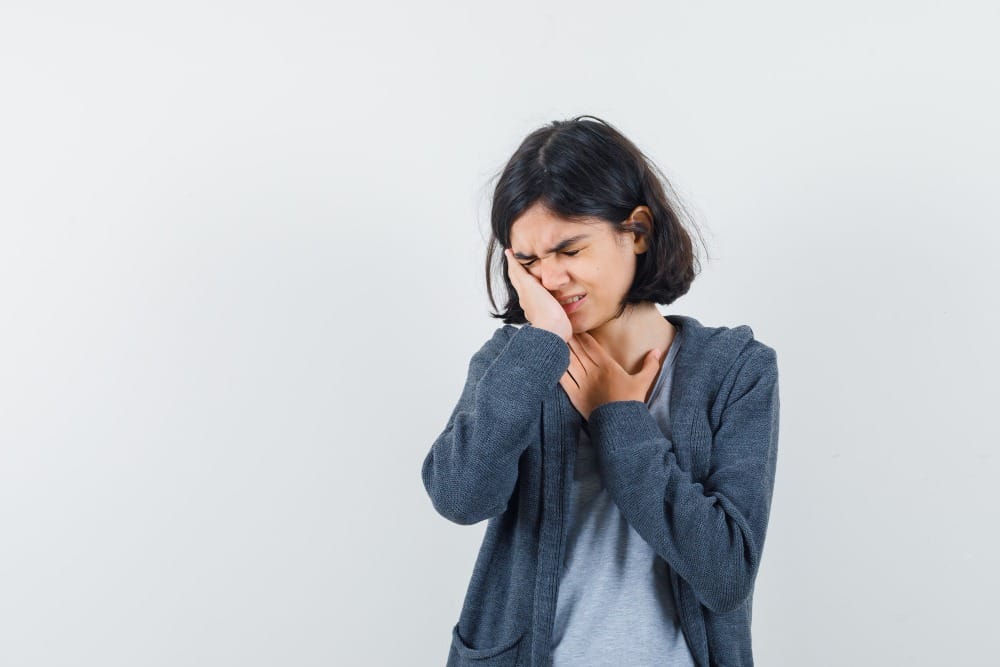
Individuals may experience severe pain in or around the eyes. This pain may feel like a constant pressure or an ache that intensifies when the eyes are moved or touched. The pain can extend to nearby areas, such as the forehead, cheeks and temples. Persistent discomfort is one of the key black fungus in eyes symptoms.
3. Blurred or Double Vision
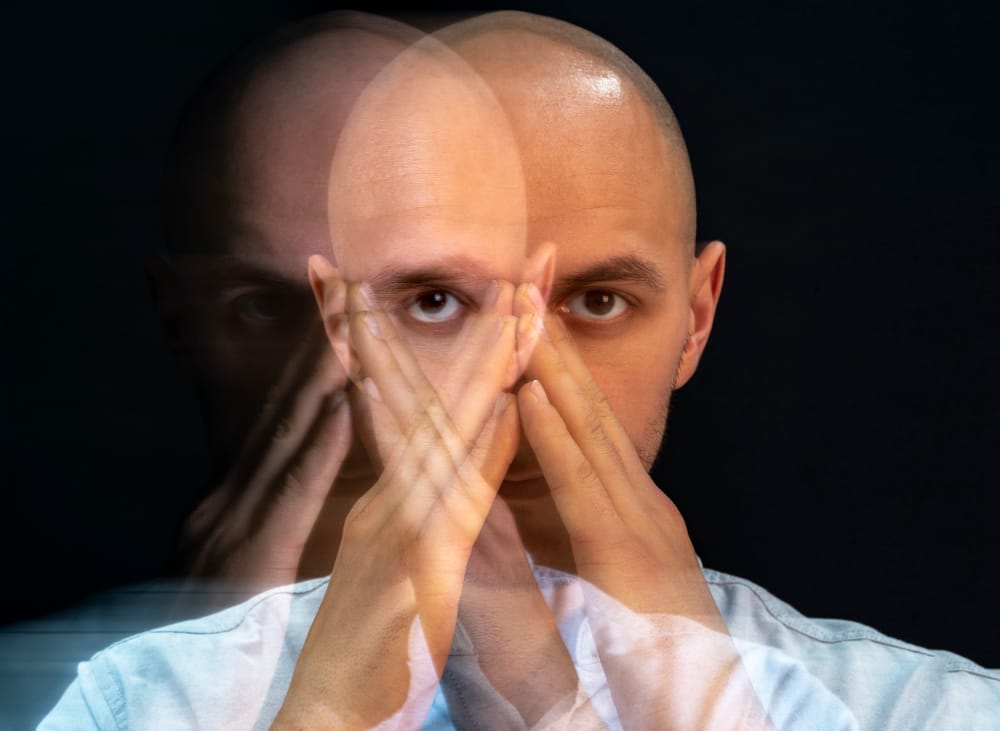
One of the alarming symptoms is vision problems. Blurred vision, where things look out of focus or double vision, where objects appear as two images can occur as the infection affects the optic nerve or tissues around the eyes.
4. Dark or Black Lesions Around the Eyes
In more advanced cases, black fungus causes dark or black patches or sores around the eyes or nose. These lesions are a sign of tissue damage and necrosis, which means the affected tissue is dying due to the infection. This is one of the most visible black fungus in eyes symptoms.
5. Nasal Congestion or Discharge

Since black fungus often starts in the sinuses, nasal symptoms like congestion or a runny nose are common. The discharge may be thick, black or blood-stained. These symptoms often indicate that the infection has spread beyond the sinuses.
6. Eyelid Drooping and Difficulty Moving the Eye
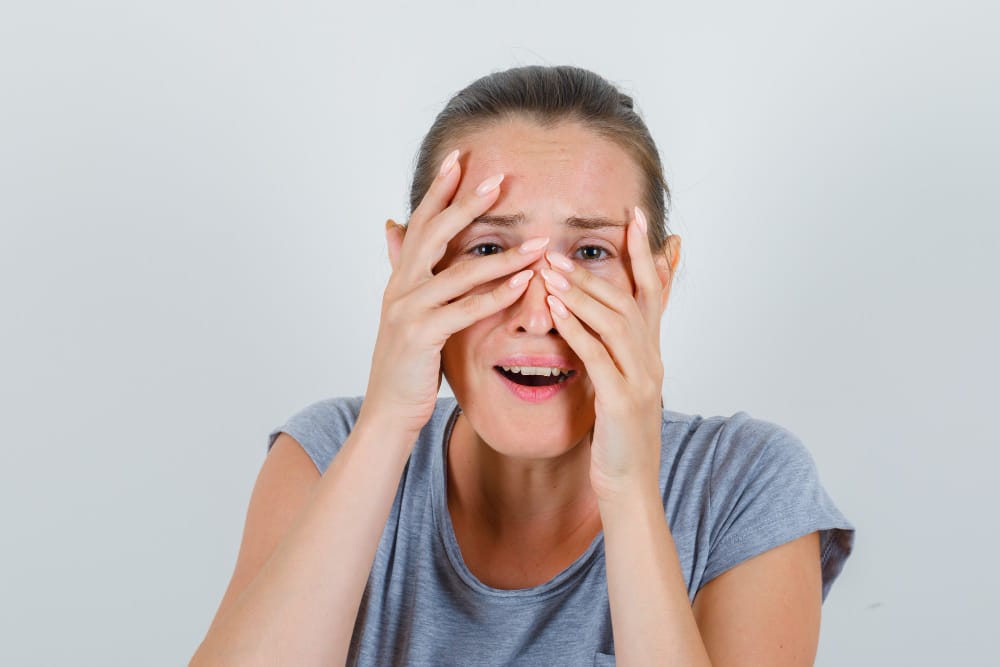
As the infection worsens, it can damage the muscles and nerves around the eyes. This can cause the eyelid to droop (a condition called ptosis) and make it difficult to move the eye. This immobility may also contribute to vision problems and is a significant symptom of black fungus in eyes.
7. Loss of Vision
In severe cases, the infection can lead to partial or complete vision loss. This occurs when the fungus damages the optic nerve or other critical structures in the eye. Vision loss is one of the most severe black fungus in eyes symptoms.
8. Headache and Fever
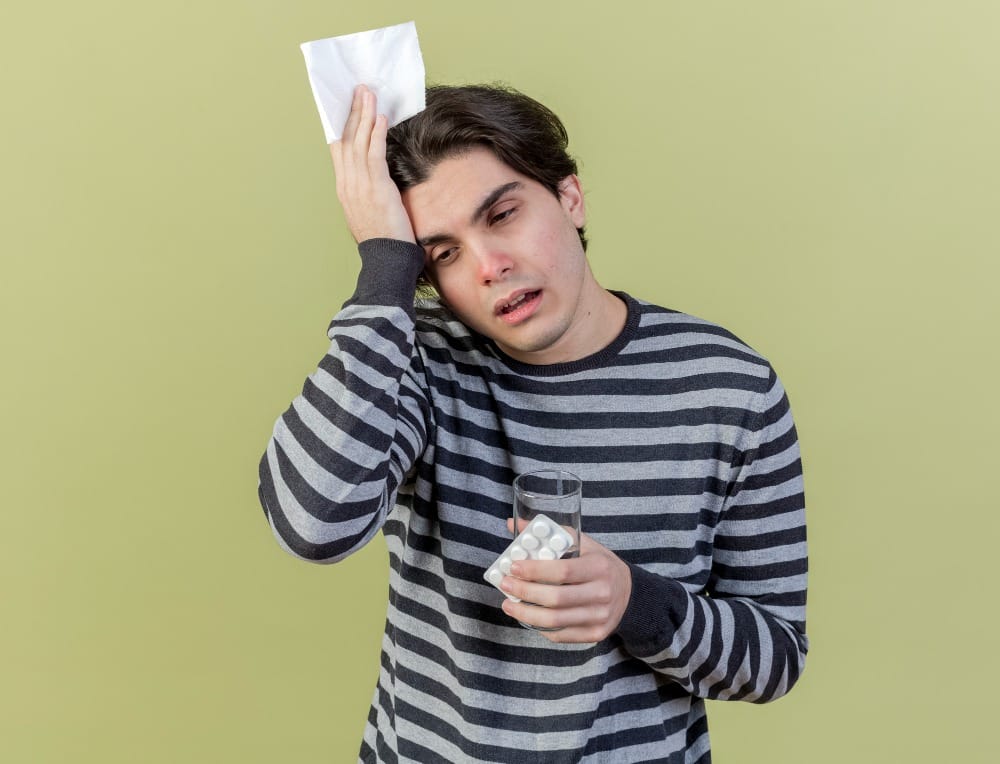
Some patients may also experience systemic symptoms like persistent headaches or a fever. These symptoms indicate that the infection is spreading and affecting other parts of the body. If combined with other symptoms of black fungus in eyes, medical attention should be needed immediately.
Who is at Risk for Black Fungus in Eyes?
Not everyone is at the same level of risk for developing black fungus. Some groups are more vulnerable than others. These include:
1. People with Uncontrolled Diabetes
High blood sugar levels weaken the immune system and create an environment where fungal infections can thrive. Individuals with poorly managed diabetes are among the highest-risk groups for black fungus. Many black fungus in eyes symptoms have been observed in diabetic patients.
2. COVID-19 Patients
Many patients recovering from COVID-19, especially those treated with high doses of steroids or who required oxygen therapy have reported black fungus infections. Steroids are effective for controlling inflammation but can weaken the immune system and raise blood sugar levels making individuals more vulnerable to infections.
3. Immunocompromised Individuals
People undergoing cancer treatments, those who have received organ transplants or those living with HIV/AIDS are at higher risk because their immune systems are weakened. Black fungus in eyes symptoms in these patients often progress rapidly.
4. Patients with Open Wounds or Recent Surgery
Infections can enter the body through open wounds, burns or surgical sites. If these wounds are not properly cleaned or covered, they can become entry points for the fungus.
Prevention of Black Fungus in Eyes
To prevent black fungus in the eyes, practice good hygiene, adopt healthy habits and take precautions. Here are few simple steps to reduce the risk:
1. Keep Blood Sugar Levels Under Control
For people with diabetes regular monitoring of blood sugar levels is essential. Take your medicines exactly as suggested by your doctor and maintain a healthy diet to help prevent spikes in blood sugar levels.
2. Use Steroids with Caution
Steroids should only be used with the supervision of a healthcare practitioner. Overuse or misuse of steroids can weaken the immune system and increase the risk of infections.
3. Practice Good Hygiene
Maintaining cleanliness is essential to prevent fungal infections. Ensure your surroundings are tidy and dust free. Use protective gloves and a mask when dealing with soil, compost or decaying organic waste.
4. Protect Wounds and Surgical Sites
If you have cuts, burns or recent surgical wounds, clean them thoroughly and keep them covered with sterile bandages. This reduces the chances of fungal spores entering the body.
5. Stay Alert During COVID-19 Recovery
COVID-19 patients should monitor for signs of black fungus particularly if they have diabetes or have received steroid treatment. Regular check ups with doctors can help identify early symptoms of infection.
6. Avoid Self-Medication
Self-medicating with antibiotics or steroids without a doctor’s advice can cause more harm than good. Always consult a healthcare professional before beginning or discontinuing any medication.
7. Focus on Boosting Immunity
A strong immune system is the best defense against infections. Eat a balanced diet rich in fruits and vegetables, exercise regularly and ensure you get enough sleep to keep your immune system functioning well.
Diagnosis and Treatment of Black Fungus in Eyes
Timely diagnosis is critical for managing black fungus. Delays can result in serious complications. Here are the steps involved in diagnosis and treatment:
Diagnosis
- Physical Examination: Doctors will look for visible signs of infection such as redness, swelling or black lesions.
- Imaging Tests: CT scans or MRIs are used to determine how far the infection has spread.
- Laboratory Tests: A tissue biopsy or fungal culture can confirm the presence of mucormycosis.
Treatment
- Antifungal Medications: Intravenous antifungal drugs like amphotericin B, are the primary treatment for black fungus. Oral antifungal drugs may also be prescribed.
- Surgical Intervention: In advanced cases, surgery may be necessary to remove infected tissues. This could include debridement (removal of dead tissue) or in extreme cases removal of the affected eye to save the patient’s life.
- Supportive Care: Managing underlying conditions like diabetes and providing proper nutrition are crucial for recovery.
Conclusion
Black fungus in the eyes is a severe condition but early detection and prevention can save lives and protect vision. By understanding black fungus in eyes symptoms and taking preventive steps like controlling diabetes, maintaining hygiene and using medications wisely, individuals can reduce their risk. If you or a loved one notice any of these symptoms seek medical attention immediately. Timely action can make all the difference in managing this life threatening infection.
Frequently Asked Questions
1. Can black fungus in the eyes cause permanent vision loss?
Yes, if left untreated, black fungus can lead to partial or complete vision loss due to damage to the optic nerve and surrounding tissues.
2. How can black fungus in the eyes be prevented?
Prevention includes controlling blood sugar levels, using steroids with caution, practicing good hygiene, and avoiding exposure to fungal spores in soil and decaying organic matter.
3. What treatments are available for black fungus in the eyes?
Treatments include intravenous antifungal medications, surgical intervention to remove infected tissue, and supportive care for underlying conditions like diabetes.
4. Can black fungus in the eyes spread to other parts of the body?
Yes, black fungus can spread from the eyes to the sinuses, brain, and other tissues, potentially leading to serious complications if not treated promptly.
5. How is black fungus in the eyes diagnosed?
Diagnosis typically involves a physical examination, imaging tests like CT scans or MRIs, and laboratory tests such as a tissue biopsy or fungal culture to confirm the presence of the infection.
Images By: FreePik

